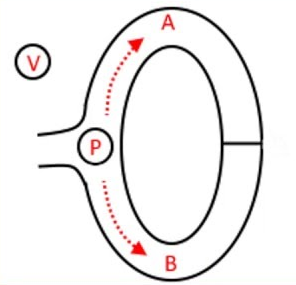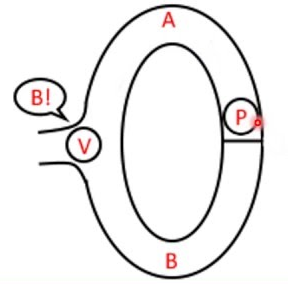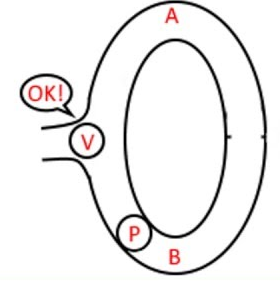After receiving feedback regarding my last article about the Zero-Knowledge Proof I recognized it didn’t get to the heart of the matter. Thus, I decided to make a rework of the article to clear things up and make the zk-proof easier to understand.
The zero-knowledge protocol is a cryptographical protocol which is mainly used for verification, for example the verification of transactions on the blockchain. The zero-knowledge protocol must satisfy three conditions:
Completeness: if a statement is true, it must be verified. In terms of blockchain: A real transaction should never get rejected by the verifying service.
Soundness: if a statement is false, no cheating prover can convince the honest verifier that it is true: No fake transactions should get verified.
Zero-knowledge: if the statement is true, no verifier learns anything other than the fact that the statement is true. In other words, just knowing the statement (not the secret) is sufficient to imagine a scenario showing that the prover knows the secret.
In terms of blockchain: The verifier doesn’t receive any information about the transaction itself, such as the moving amount, sending address and receiving address. Yet he should be able to confirm the transaction valid. How is that possible?
Example for zero-knowledge proof
To make the zero-knowledge proof clear I will explain it with an example:
Peter wants to proof Vivien, that he has access to a magic door. But he doesn’t want to open the magic door in front of her, because another person might see them and come to know to the secret which opens the magic door. The door is in a cave. In the cave there are two ways. Both ways end in the magic door which connects both ways. Since both ways are curved, you can’t see the magic door from the entrance.
Peter enters the cave, chooses one way and follows it to the magic door, while Vivien waits outside.

Vivien enters now the cave. She doesn’t know which way Peter chose and also doesn’t see him from the entrance. But she decides now what way Peter shall come back. She takes B and calls Peter to come back way B.
When Peter entered the cave he decided to go the way A. The only option to go back over way B is to go through the magic door.

Since he is telling the truth, that he does has access to the magic door, he uses it and goes back way B. Vivien sees him coming back way B and can confirm now, that Peter has access to the magic door even though she never saw him entering it. She also does not know the secret for entering the door.

But what would happen if Vivien had chosen to call for way A and Peter had not access to the magic door? In this case Peter would have taken the right way even though he lied. The chances of this happening are 50%, since Vivien chooses between two ways. So statistically every second time Vivien would confirm a false statement.
Regardless of this, the chances that Peter comes back the right way when he does have access to the magic door is 100%. So, if this experiment gets repeated several times two patterns appear. If Peter speaks the truth and can enter the magic door, the success rate will be 100%. After several iterations Vivien can now be sure that Peter’s statement is true.
In the case that Peter lies the success rate will be about 50% in average. Vivien can now confirm that Peter does not have access to the magic door.
This protocol provides a security of 99,99%. The 0,01% are the case, that Peter has luck and chose every time same way Vivien calls him to come back.
Usage in blockchain-technology
The zero-knowledge proof can also used in the verification of transactions on the blockchain. It provides advanced anonymity since the transaction can be claimed valid without exposing any information from the transaction itself. However the example above shows, that this zero-knowledge verification needs intense communication which costs data and time. Developing a fast and cheap zero-technology layer will make DeepOnion unrivaled as fast, low-fee and anonymous crypto-currency.
Haven't joined DeepOnion yet? Do it now!
Join Airdrop

Essential reading for anyone interested in privacy coins. Voted up
Downvoting a post can decrease pending rewards and make it less visible. Common reasons:
Submit
One of the best explanation ever
Downvoting a post can decrease pending rewards and make it less visible. Common reasons:
Submit
Interesting
I will follow you to see your future posts!
Downvoting a post can decrease pending rewards and make it less visible. Common reasons:
Submit
Cool post follow me too i am searching a good. Privacy coins for now
Downvoting a post can decrease pending rewards and make it less visible. Common reasons:
Submit